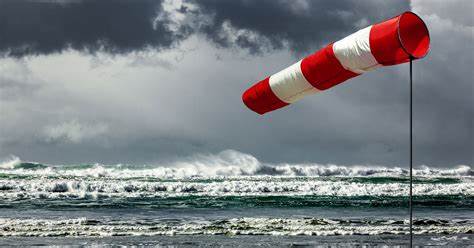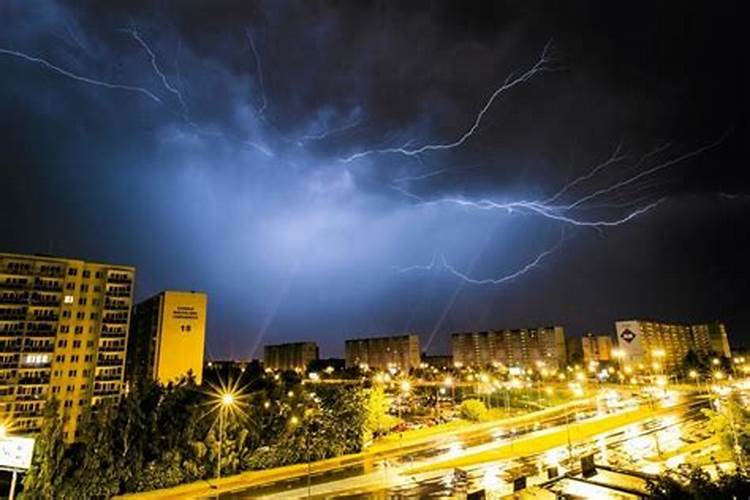Floods are one of the most common natural phenomena that occur all over the world, including Europe, especially in Greece and Poland. In recent decades, floods have become more frequent and intense, which is related to many factors, such as climate change, urbanization, and errors in water resource management. The purpose of this article is to discuss the main causes of floods, their course, and to cite examples of floods in Greece and Poland, especially those that had catastrophic consequences.
Kategoria: The future after natural disaster
2024-1-PL01-KA121-SCH-000196542
The future after disaster – how to prepare for and prevent natural disasters.
Storms and winds in Poland and Greece
Hi, on our blog, we will talk about extreme winds and storms in Greece and Poland Storms in Poland Thunderstorms in Poland occur most often from May to August, mainly during the warm summer months. They are characterized by heavy rainfall, hail and strong winds that can reach speeds of up to 100 km/h. Storms are often associated with weather fronts, and their effects include local flooding, damage to infrastructure, and threats to human health and life. In 2020, strong storms took place, causing significant damage in Małopolska and Silesia. Therefore, it is important to monitor weather forecasts and put in place effective crisis management strategies. Duration of thunderstorms in Poland Thunderstorms in Poland occur most often in the summer, mainly from May to August. Their highest intensity is observed in June and July, when warm air meets cold weather fronts, which is conducive to the formation of thunderstorms. Storms can also occur in spring and autumn, especially during transitional periods, but they are less intense then. It is also worth noting that storms in Poland can be violent, and their effects, such as heavy rainfall, hail and strong winds, can lead to serious damage. Types of Storms in Poland 1. Convective Storms 2. Frontal Storms 3. Hail Storms 4. Tropical Storms (rare) 5. Lightning Storms 6. Squall Storms Convective Storms Convective storms occur due to the intense heating of the Earth’s surface, which leads to the rising of warm, moist air. As this air cools, it forms cumulonimbus clouds. Conditions for Formation – Surface Heating: Mainly occurs on warm days. – Humidity: High humidity promotes condensation. – Atmospheric Instability: Allows air to rise. Characteristics: – Intense Rainfall: Short but violent downpours. – Hail: Can occur, causing damage to crops and infrastructure. – Lightning: High electrical activity leads to atmospheric discharges. Consequences: – Flooding: Localized flooding on roads. – Damage: Damage to buildings and infrastructure. – Hazards to People: Risk of injuries from lightning and strong winds. Convective storms are common in Poland, especially in summer, necessitating monitoring and education on safety in such conditions. Frontal Storms Frontal storms arise when different air masses meet, usually warm and cold. The warmer air rises over the cooler one, leading to condensation of water vapor and the formation of storm clouds, mainly cumulonimbus. Characteristics: – Intense Rainfall: Can be violent and short-lived. – Strong Winds: Accompanying storms can reach high speeds. – Lightning: Frequent electrical activity. Consequences: – Flooding: Localized flooding, especially in cities. – Damage: Damage to buildings and infrastructure. – Hazards to People: Risk of injuries from lightning and strong winds. Frontal storms occur in Poland year-round, and their monitoring and proper preparation are crucial to minimize impacts. Hail Storms Hail storms are meteorological phenomena that occur when strong updrafts in cumulonimbus clouds lift raindrops upwards, where they freeze and form hailstones. When these stones become too heavy, they fall to the ground. Characteristics: – Intense Precipitation: Hail can occur suddenly, causing significant losses. – Hail Size: Can range from small pellets to large stones, reaching several centimeters in diameter. Consequences: – Crop Damage: Hail can destroy plants, leading to agricultural losses. – Infrastructure Damage: Damage to roofs, windows in buildings, and vehicles. – Hazards to People: Risk of injuries from hail impacts. Hail storms are particularly common in summer during periods of intense atmospheric heating. Tropical Storms Tropical storms in Poland are a rare phenomenon, usually occurring during warm periods when air masses from the south bring higher temperatures and humidity. They form when warm, moist air meets cooler masses, leading to intense convection. Characteristics: – Intense Rainfall: Strong, prolonged rainfall can occur. – Strong Winds: Accompanying storms can reach high speeds, leading to damage. – Electrical Activity: Frequent atmospheric discharges. Consequences: – Flooding: Localized flooding can lead to infrastructure problems. – Damage: Damage to buildings, trees, and power lines. – Hazards to People: Risk of injuries from wind and discharges. Although tropical storms are rare, their effects can be significant, making weather condition monitoring essential. Lightning Storms Lightning storms are meteorological phenomena characterized by intense rainfall, strong winds, and electrical activity. They occur when warm, moist air rises and interacts with cold masses, forming cumulonimbus clouds. Characteristics: – Atmospheric Discharges: Lightning results from the potential difference between clouds and the ground. – Intense Rainfall: Accompanied by sudden, heavy downpours. Consequences: – Life Threats: Lightning can cause fires and injuries. – Infrastructure Damage: Damage to power lines and buildings. Lightning storms occur in Poland year-round, but are particularly intense in summer, requiring monitoring and preparation for hazards. Squall Storms Squall storms are intense, short-lived atmospheric phenomena characterized by sudden and strong wind gusts, often accompanied by heavy rainfall. They mainly form due to local temperature increases and atmospheric instability, promoting intense convection. Characteristics: – Strong Winds: Gusts can exceed 100 km/h, leading to damage. – Intense Precipitation: Often associated with sudden but short-lived rain. Consequences: – Infrastructure Damage: Damage to roofs, power lines, and trees. – Hazards to People: Strong winds can lead to injuries and transportation disruptions. Squall storms mainly occur in Poland during summer, and their sudden nature necessitates monitoring of weather conditions and preparation for potential threats. Examples of Storms in Poland Here are 10 examples of storms in Poland: – Summer storms in 2020 – Hurricane „Ksawery” (2017) – Hail storms in 2019 in Małopolska – Storms in August 2015 – Storms in July 2019 – Hurricane „Sabina” (2020) – Lightning storms in 2014 – Storms in 2008 in Pomerania – Rainfall storms in 2010 – Storms in June 2013 Detailed Description of the Most Severe Storm in Poland: Hurricane „Ksawery” (2017) Hurricane „Ksawery,” which swept across Poland in December 2017, was one of the most destructive phenomena of that period. It brought strong winds reaching speeds of up to 120 km/h, resulting in significant destruction. Thousands of trees were uprooted across the country, and infrastructure damage affected not only homes but also power lines, leading to blackouts in many regions. Emergency services… Czytaj dalej Storms and winds in Poland and Greece
Fires – a serious problem of southern Europe
Strona w języku polskim Fires – a serious problem of southern Europe Introduction to the topic Introduction to the problem of fires in southern Europe Southern Europe is a particularly fire-prone area for a variety of reasons. First and foremost, the Mediterranean climate is characterized by hot, dry summers and mild, rainy winters, which is conducive to the occurrence of fires, especially in summer, when high temperatures and low humidity create favorable conditions for fire spread. Climate change is further aggravating the situation by causing more frequent and intense heat waves. Increased average temperatures and irregular rainfall make forests drier, increasing the risk of fire. In addition, climate change can extend the fire season and increase its intensity. In addition to natural factors, human activities also increase the risk of fires. Urbanization, improper management of green and agricultural lands, and accidental arson are all elements that can lead to fires. In tourist regions, where there are many people in the summer, the risk of accidental fire ignition increases. The increasing risk of wildfires has serious consequences for people, the environment and the economy. Fires destroy natural ecosystems, threaten biodiversity and emit large amounts of carbon dioxide into the atmosphere, accelerating climate change. For local communities, they threaten life and property, and cause economic losses, especially in tourism and agriculture. In order to effectively combat fires, it is necessary to implement comprehensive forest management strategies that include both preventive measures and rapid response to emerging incidents. An important element is educating the public and raising awareness of fire risks and appropriate behavior in the face of such risks. International cooperation and investment in modern fire monitoring and suppression technologies can play a key role in protecting the region from this growing problem. History and statistics of fires in Greece and other countries in the region The history of fires in Greece has its roots in antiquity, but in recent years the problem has become more acute due to climate change and urbanisation. In the 20th century, fires started to occur with greater frequency and their intensity increased significantly, especially in summer. Recent data show a dramatic increase in the number of fires in Greece. In 2021, the country struggled with some of the most severe fires in years, destroying thousands of hectares of forest and forcing many people to evacuate. On average, it is estimated that around 1,500 fires break out in Greece every year, covering an area of more than 50,000 hectares. The fire season, which lasts from June to September, is particularly dangerous due to high temperatures and strong winds. The problem of large fires in Greece was particularly exacerbated in the late 1990s and early 2000s, when climate change began to have a significant impact on the region. In 2007, some of the most tragic fires in the country’s history took place, costing dozens of lives and destroying many villages and towns. Comparing Greece’s situation with other Mediterranean countries such as Spain, Portugal and Italy, it is clear that the entire region is facing similar problems. Rising temperatures, droughts and neglect of traditional agricultural and forestry practices increase the risk of fires. Joint international initiatives, such as cooperation within the European Union, aim to improve preparedness and response to fire hazards, which is key to protecting people and the environment. Impact of seasonality and weather conditions Seasonality is key to fire risk, and the summer period is particularly critical. High temperatures, prolonged drought and strong winds create conditions conducive to the rapid spread of fire, posing a serious threat to ecosystems, property and human life. In summer, when temperatures peak, humidity decreases and the soil becomes dry, increasing the flammability of vegetation. Under such conditions, even the smallest spark can lead to a fire. In addition, droughts caused by a lack of rainfall lead to a reduction in water resources, making firefighting efforts more difficult. Strong winds, which often occur during summer storms, pose an additional challenge. They can accelerate the spread of flames to new areas, making it difficult to control the fire. Winds can also carry sparks over considerable distances, initiating new fire outbreaks in areas that seemed safe. In the context of a changing climate, phenomena such as heat waves and extreme weather conditions are becoming more common, increasing the risk of wildfires. It is therefore important for societies to take preventive measures, such as monitoring weather conditions, banning forest fires in times of drought and educating residents about the dangers of fires. Causes of fires in Greece Natural causes of fires Introduction Self-ignition Lightning Other factors Introduction Fires can be caused by a variety of factors, including natural causes. Such causes include spontaneous combustion, lightning strikes and certain weather conditions, such as hot winds and dry storms, which can increase the risk of fire. Self-ignition Spontaneous combustion is a phenomenon in which organic matter, for example leaves, wood or other organic substances, heats up to such an extent that it begins to burn without an external fire source. This process is the result of natural chemical reactions that can occur as a result of prolonged exposure to sunlight or moisture. High temperatures and sufficient humidity can lead to fermentation and oxidation, resulting in spontaneous combustion. In many parts of the world, especially in forests, cases of spontaneous combustion occur especially in summer, when conditions are most favourable. Lightning Lightning is another natural trigger for fires. Lightning strikes, especially during thunderstorms, can ignite trees, grasses and other flammable materials. When lightning strikes the earth’s surface, it generates an enormous amount of heat, which can be enough to ignite surrounding substances. Lightning is one of the main causes of fires in forests and open areas, especially in areas where there are long periods of drought. Other factors Specific atmospheric conditions, such as hot winds and dry thunderstorms, also play a key role in the occurrence of fires. Hot winds, which often accompany high temperatures, can spread fires quickly, bringing sparks with them from one place… Czytaj dalej Fires – a serious problem of southern Europe
Soil erosion in Greece
Soil erosion and landslides are serious problems that affect Greece, a country with diverse terrain and a specific climate. Many regions, especially mountainous ones, are struggling with soil degradation, which leads to the loss of fertile soil layers and a decrease in its quality.




